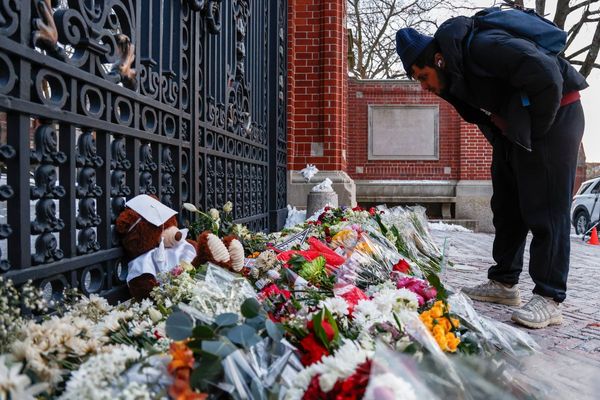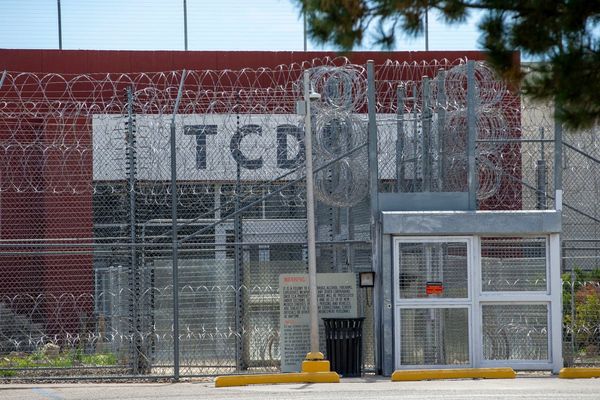
We’re often quick to celebrate when natural land is saved: a rainforest spared, a vital habitat conserved. But what happens if there’s nobody there to protect it? That’s a problem international conservation charity World Land Trust was aiming to solve when it set up its Keepers of the Wild programme, which provides salaries for rangers on partner reserves all over the world. “You need people there every day,” says Dan Bradbury, director of brand and communications at World Land Trust. He points out that those working as keepers of the wild are not only rangers but often firefighters, community organisers, medics, animal rescuers, research assistants and general guardians.
Through the programme, those living in nearby villages are hired to protect natural heritage. Some are even former hunters. “They become amazing guides, because they know the forests,” says Bradbury. He offers the example of a Colombian bird hunter who once used his talent for mimicking bird calls to “whip away birds and take them to market”. Now employed as a keeper of the wild, he uses the same bird call, but for good, as a bird guide in the reserve. “They’re the peacemakers there, on the frontline of conservation,” says Bradbury.
Located in Armenia, you’ll find the Caucasus Wildlife Refuge, created in 2011 by World Land Trust’s partner organisation, Foundation for the Preservation of Wildlife and Cultural Assets (FPWC). There, Keepers of the Wild-funded rangers Boris Vanyan and Manuk Manukyan take on arduous and often perilous work as part of an award-winning ranger team. On a given day, they could deal with wildfires, armed intruders or animals injured by landmines. But, as they explain, the work comes with plenty of pinch-me moments among the leopards and lynxes, too. Here’s how Vanyan and Manukyan spend a typical day at work.
Week-ahead preparation: marking out routes
Vanyan: Before my workday even begins, we start planning. Friends call – shepherds or other community members – who may have seen something or heard something we should check out. Sometimes we finalise plans the day before.
5.30am: Get dressed, pack up
Vanyan: Our clothes are light, with long sleeves for sun protection. Sturdy shoes are a must – there are many poisonous snakes. I pack binoculars, trap-cameras, food, a knife, and a first aid kit. I’ll even take needles in case something major happens and we need stitches. My wife reminds me to bring bear spray.
Manukyan: Some people say that when you’re out in the wild, you should have a weapon in case a bear attacks. But there is no reason for a bear to attack if you know not to go into his den, or near his cubs. I’ll usually just pack trap-cameras, plus camera batteries and memory chips.
5.45am: Travel to work by horseback
Vanyan: Depending on the plan, I take horses, walk or drive. That depends on the landscape. Our hours are according to wildlife, not what is comfortable to us – if the wildlife wakes up at 5.30am, we move with their schedule.
8am: Manukyan gathers local workers
Manukyan: I wish I could start as early as 5am, but instead I go to the village to collect colleagues and guide them to the eco centre, where we have greenhouses, lodges and a bear rehabilitation centre.
10am: Vanyan patrols for threats
Vanyan: There are three main threats to wildlife in this area. First, illegal poaching. Then there’s wildfires, which can mean animals migrate to areas that are dangerous to them, or they lose their habitat. The third is the many landmines on the border of Armenia and Azerbaijan. Crossing the mines, an animal could lose a limb, or could even be blown up.
Manukyan: Recently, we had fires in three different places. A storm had begun destroying the juniper forests – the lightning was setting these ancient trees on fire. They have oil inside, and they burn like hell. But we have horses trained that can carry water up the mountain, and, together with the other rangers, the fire department and the state reserve, we managed to distinguish all three fires.
1pm: Lunch in the mountains
Vanyan: Usually if I work close to home, I’ll go home for lunch, but I’m reluctant to take a break like this, because being in nature is the most relaxing thing.
2pm: Vanyan gets back to work
Vanyan: I also manage tree planting for the reforestation programme in degraded areas of the Caucasus Wildlife Refuge – organising villagers, showing them where and how to plant. Sometimes we have to negotiate with locals who let their cattle roam, as they can eat the young trees, which can be a challenge.
6pm: Golden hour research
Vanyan: In the evening, the mammals come with their youngsters to the wetland. I’ll hide somewhere near a watering hole and wait for them to turn up – golden hour is the best time to film the animals, such as the bezoar goats, with a very high zoom.
Manukyan: Animals often recognise me. For a while there was a Eurasian lynx – very risk-averse animals – which I would spot, only from far away. One time we stood, just four or five metres apart, just looking at each other for a long time. I tried to take photos, but the clicking sound made him run off. I’ve observed him many times, in many places. There is also a herd of bezoar goats who pose when I’m coming to check the trap-camera.
Vanyan: We recently spotted two different Caucasian leopards as far as 3km from one another, which is a very good sign – it shows that the leopards have enough prey to come and stay, to feel secure in the area and to roam. We also monitor for three species of vultures, and observe lots of bears.
7pm: Head back home – but sometimes not for long
Manukyan: I’ll drop off my team and travel home. But I have a live camera on my phone, and I’m constantly checking it to see if there’s something alarming.
One time, close to New Year’s Eve, we spotted a torchlight on the top of the mountain, and identified that it was people – with weapons. We immediately drove to the mountain – a 90-minute drive. I called the police and the rangers from the state reserve, and, of course Boris, and together, we encircled them. It turned out they were not armed with hunting guns, but military guns.
Their guns were taken and there was a police case – it took the whole night, until 4am or 5am. This type of thing is quite usual – everything depends on the needs of nature.
Manukyan: Sometimes I don’t see my three children for a few days at a time, because I come home after they go to bed, and leave before they wake up. When that happens, they demand I organise a barbecue!
Vanyan: My son is nine, and he’s very proud. He wants to learn about everything, to see all the materials I’m gathering. Maybe someday he will come with me, maybe he’ll continue my journey.
Manukyan: The real richness, the real value of this country is its biodiversity. It’s very important to understand that the love of a country starts from nature – from rivers to trees, and forests to wildlife. Everything we are keeping now is not only for us, but for future generations.
You can support Rangers like Manuk Manukyan and Boris Vanyan by donating to World Land Trust’s Keepers of the Wild Programme







